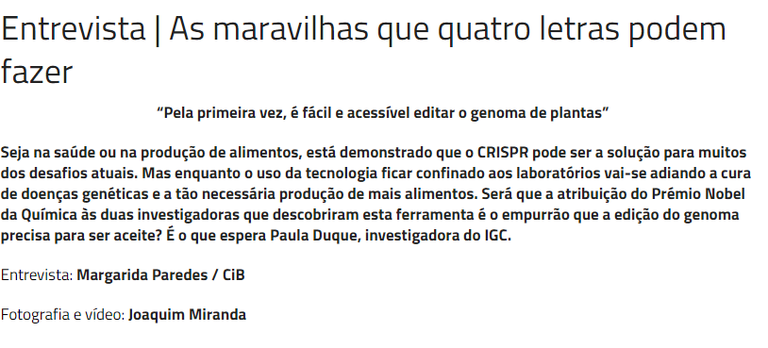CRISPR: tweaking genes to improve plants
The editing tool CRISPR brought a turning point for genetic engineering, opening up vast possibilities for biotechnology application, from health to agriculture. In an interview with CiB – Centro de Informação de Biotecnologia, Instituto Gulbenkian Ciência Principal Investigator and GREEN-IT member Paula Duque addresses this new genome editing tool and its application in plant breeding, as well as its impact on agriculture and sustainability.
The CRISPR-Cas9 technology allows to edit the genome by cutting the DNA and altering it according to the final intended purpose. CRISPR has proved itself more efficient, easier, faster and less expensive than other genome editing tools, presenting researchers with numerous new ways to apply this technology. However, unfounded prejudice and fear still taint CRISPR, as well as other types of genetic editing. “There is no scientific evidence that a Genetically Modified Organism has any negative impact on human health” says Paula Duque to CiB.
When applied to agriculture, CRISPR allows to alter the genome of crops and can be used to create plants with a higher tolerance and resistance to adverse environmental conditions, pests and diseases, consequently allowing to respond to major societal issues, such as hunger and sustainability. “The genetic improvement of plants through the editing of the genome can not only save many lives, by allowing crops to grow in adverse conditions, but also make agriculture more sustainable and environmentally friendly” explains Paula.
The CRISPR technology earned Emmanuelle Charpentier and Jennifer A. Doudna the 2020 Nobel Prize in Chemistry, for the development of this method of genome editing.
Read the full interview here.
Credits to CiB/Vida Rural



